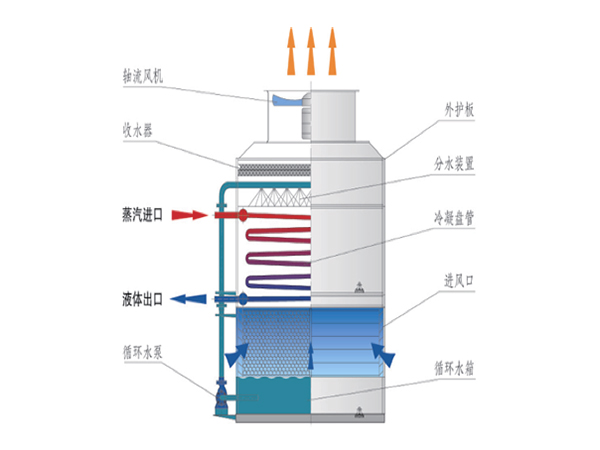Principle and function
Evaporative condenser is an energy-saving and water-saving equipment that uses the evaporation of water film outside the tube to remove the heat released by the condensation of exhaust steam inside the tube.
Principle Introduction
Regenerative Therma | 0xidizer (RT0) is an energy-saving and environmentally friendly device used for treating low to medium concentration volatile organic waste gas.
The principle of the regenerative thermal oxidizer is to use activated carbon to adsorb and concentrate low concentration organic waste gas. After the adsorption is close to saturation, hot air is introduced to heat the activated carbon, causing the organic waste gas to desorb and oxidize the combustible waste gas into corresponding oxides and water at high temperature, thereby purifying the waste gas and recovering the heat released during the decomposition of the waste gas. The decomposition efficiency of exhaust gas reaches over 99%, and the heat recovery efficiency reaches over 80%.

Replacing sensible heat exchange with latent heat exchange (energy-saving and water-saving heat exchange mechanism)
A 1kg water temperature rise of 1 ℃ takes away 1kca | heat, while 1kg water evaporation takes away 580kca | heat. According to a temperature rise of 8 ℃, the relationship is still 70 times. Small circulating water volume, energy-saving; Low water consumption, water-saving.
Strong combination of condensation heat release and evaporation heat absorption (high efficiency)
The condensation inside the tube releases heat, while the evaporation outside the tube absorbs heat, both undergoing phase transition, resulting in high efficiency.
The lower limit temperature for cooling is the wet bulb temperature (due to strong heat transfer driving force or low cooling temperature), and the system is simple with only one heat transfer (direct heat transfer).
Evaporative condensation is an energy-saving and water-saving heat transfer method that mainly uses latent heat transfer and mass transfer to drive heat transfer.
The efficient condensation technology optimizes the combination of air cooling and evaporative cooling with the two different heat transfer mechanisms mentioned above, comprehensively reflecting the characteristics of air cooling heat transfer without water consumption, high evaporative heat transfer efficiency, and energy saving.
